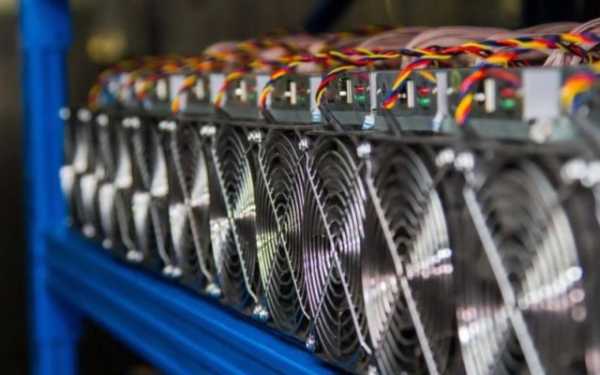How will rising electricity tariffs affect mining?

Industry participants told RBC Crypto about the changes taking place in the cryptocurrency mining industry amid rising electricity tariffs
Electricity is one of the most significant costs for miners, as cryptocurrency mining equipment consumes a significant amount of energy. One device from the latest generation can consume about 3.5 kWh, or about 2.5 MW per month, and industrial facilities have thousands of such machines.
Since July 1, electricity in Russia has become more expensive. According to the forecast of the socio-economic development of the Russian Federation for 2025-2027, this year the growth of tariffs for the transmission of electricity via the Unified National Electric Grid (UNEG) will be 11.5%, and for grid companies – 11.6%.
Industry experts told RBC-Crypto how tariff increases affect business, what companies are doing to minimize difficulties, and who will have the worst of it.
“Margin of safety”
Leading market participants use an internal risk management system, and the increase in electricity prices is taken into account in it, says independent expert on blockchain, energy and digital finance Oleg Ogienko. According to him, the annual planned indexation of electricity tariffs does not affect energy-intensive businesses dramatically, but still gives a negative signal.
“The most advanced companies initially bet on being at the bottom of the price curve for electricity, connecting to the grid and consuming energy with the greatest efficiency. This provides a certain margin of safety,” Ogienko explained.
At the same time, he noted that, of course, such an outpacing inflation increase in energy prices reduces the competitiveness of Russian industrial mining as a whole. The expert noted that clients and investors, especially foreign ones, are starting to choose other jurisdictions, such as the United States, where a real mining boom is currently taking place.
Expanding cooperation with the fuel and energy sector
In the current economic conditions, the construction of new data centers in Russia is declining, especially in regions with high electricity prices, GIS Mining notes. Miners are focusing on energy-surplus areas with inexpensive electricity or on regions where they can control prices through their own generation. There is high interest in joint projects with oil and gas companies offering to use associated gas to produce electricity.
Now, first of all, the miner is looking for partners among vertically integrated oil and gas and generating companies, and is concluding new partnerships, said Vasily Girya, owner and CEO of GIS Mining. According to him, the company is intensively analyzing the possibilities of cooperation with energy generating companies that use gas to generate electricity and heat, and by the beginning of next year, it plans to develop the direction of building data centers using gas generation.
For reference: the life cycle of equipment for energy-intensive computing (cryptocurrency mining) at industrial facilities has two stages, during which electricity is used differently. The first stage is when the latest equipment is purchased and used 100% in continuous operation mode, ensuring the target profitability. This stage is tied to the extraction and accumulation of bitcoin. After three to four years of use, the equipment becomes obsolete. The second stage is when the equipment is transported to other sites using the so-called night tariff. Uptime (uninterrupted operation) is reduced to 65–70%, the electricity tariff is reduced by about 30%. Third-party software is often installed on the equipment. This equipment can still work, as a rule, for one and a half to three years.
Against the backdrop of a significant decline in Russian gas exports to Western European countries, cooperation between Russian fuel and energy companies and industrial mining is expanding, says Girya. He emphasized that this allows for revenue to be earned in dollars and bitcoins without political and operational risks.
In addition, the expert noted that, in addition to Russia's energy-surplus regions, some other countries also look strategically attractive for the industry. Girya included Kazakhstan, Ethiopia, and Belarus among them.
“Profitability remains attractive”
The increase in tariffs from July 1 did not come as a surprise, says Maxim Simutkin, Director of Development, Energy and Construction at Intelion. He said that all the changes were approved back in December last year and the company had foreseen the corresponding adjustments to the project economics in advance.
But, in addition to the growth of tariffs, the profitability of mining is currently affected by the strengthening of the ruble, Simutkin noted. He added that the ruble has actually strengthened by more than 20%, which has affected profits.
“Nevertheless, even in such conditions, cryptocurrency mining continues to bring high profitability – according to current calculations, for new devices it exceeds 60% and remains attractive, despite neither the increase in costs nor the temporary strengthening of the national currency,” Simutkin said.
Who will have a hard time?
Since this year, mining has been restricted in some parts of Russia. In the republics of the North Caucasus, LPR, DPR, Zaporizhzhya and Kherson regions, as well as in the south of the Irkutsk region, cryptocurrency mining is prohibited until March 15, 2031. In Buryatia and the Zabaikalsky Krai, mining is prohibited during the heating seasons. The restrictions are related to the local shortage of energy resources.
According to the Federal Tax Service (FTS) as of April 1, 2025, the largest number of legal miners are currently registered in Krasnoyarsk Krai, Irkutsk Oblast, and Tatarstan. In the latter region alone, more than 5,000 mining farms operate, according to information from the Tatarstan Ministry of Digital Development.
The worst hit by the current increase in electricity prices will be data centers in the European part of Russia and other regions, where the mining business is already balancing on the edge of profitability, Oleg Ogienko believes. In his opinion, the “white” segment of business will also have a hard time with growing costs, while the shadow sector has more room to maneuver.
According to Vasily Giri, it will be difficult for market participants who continue to work in the northern regions of the Irkutsk region, because differentiated electricity tariffs are now in effect there. The expert also noted that the negative consequences will become a noticeable factor of pressure on the owners of old-generation equipment, most of which is already operating at a loss – and with the increase in tariffs it will be even more difficult for them.
Источник: cryptocurrency.tech



